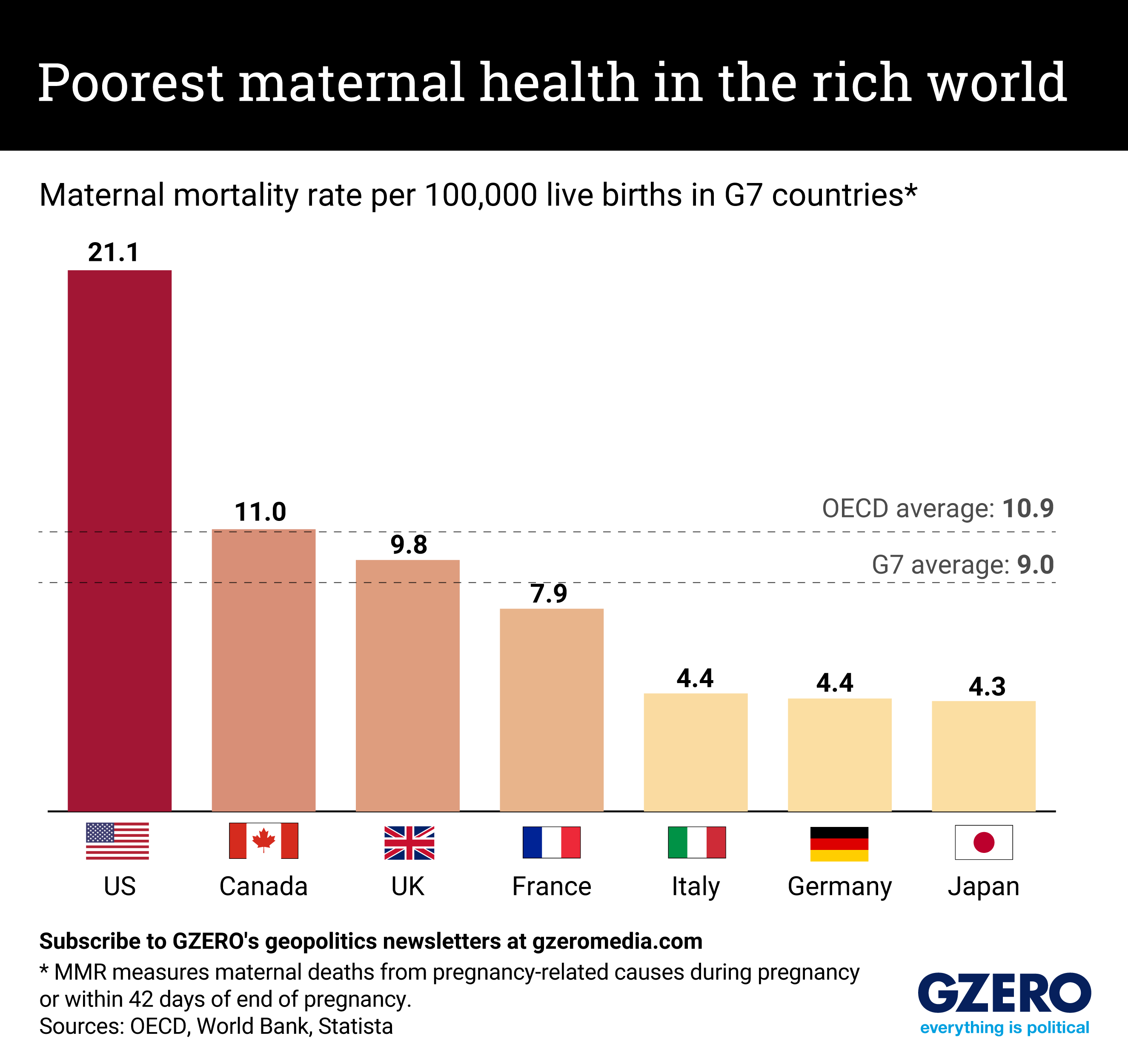October 24, 2024
A woman in the US is nearly twice as likely to die from pregnancy-related causes as a woman in Canada. Compared to Japan, Germany, or Italy, the rate is nearly five times higher.
The United States, in fact, has the worst maternal mortality rate of any high-income country in the world. On average in the G7 group of wealthy democracies, nine pregnant women out of every 100,000 will die as a result of pregnancy or childbirth. In the US, it’s more than 21.
Experts point to a range of factors. One is a lack of adequate care during and after pregnancy, including from midwives or doulas, two professions virtually unknown in the US that have been shown to improve maternal health outcomes elsewhere. According to a recent study on America’s maternal health crisis by the Commonwealth Fund, a philanthropy that supports independent health care research, there are just four midwives per 1,000 live births in the US. In Sweden, where maternal mortality is virtually unknown, there are 80.
The US also stands out for its lack of mandatory paid maternity leave, which is shown to support maternal health by helping women manage the stresses of new parenthood.
Lastly, there are pronounced racial disparities in the US: Maternal death rates among Black women are 2.5 times as high as those for white women, and four times higher than Asian Americans. Higher mortality rates for Black women persist even when corrected for educational level, a loose proxy for income.
Here is a look at how maternal mortality rates compare across the G7 countries, with a comparison also to the average in the OECD, a wider grouping of higher-income countries.
More For You
- YouTube
Some of the regime’s best moments — did we miss any? #PUPPETREGIME
Most Popular
Mastercard Economic Institute's Outlook 2026 explores the forces redefining global business. Tariffs, technology, and transformation define an adaptive economy for the year ahead. Expect moderate growth amid easing inflation, evolving fiscal policies, and rapid AI adoption, driving productivity. Digital transformation for SMEs and shifts in trade and consumer behavior will shape strategies worldwide. Stay ahead with insights to help navigate complexity and seize emerging opportunities. Learn more here.
- YouTube
Gotta maximize sleigh-holder value. #PUPPETREGIME
© 2025 GZERO Media. All Rights Reserved | A Eurasia Group media company.
